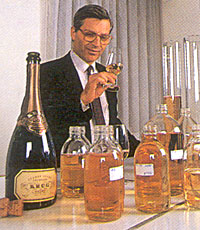


The other way to make sweet wines is to add alcohol to the fermenting juice. Those who fortify wine in this way can produce wines – varying in strength from under 16 per cent to as much as 25 per cent – such as port, Marsala, Madeira, the delicious fortified Muscats of Australia and the vins doux naturels of France: Muscat de Beaumes de Venise and Rivesaltes.
With a few exceptions, fortified wines tend to be sweet. This is either because the addition of alcohol was made whilst there was still sugar in the grapes, or because in a few cases – most notably certain sherries – the final result is sweetened.
The French distinguish between vins de liqueur, which are made by alcohol being added to the grape juice before it has begun to ferment, and vins doux naturels, in which it is added during the fermentation process. Least prestigious of the vins de liqueur are the mistelles. The best-known are Pineau des Charentes, made in Cognac, Ratafia de Champagne and Floc de Gascogne. Others are used as the base for branded aperitifs.
Of the vins doux naturels, the most popular are the Muscats from the Rhone, Roussillon and Languedoc regions, such as Beaumes de Venise, Rivesaltes and most notably Banyuls, made in Roussillon from the Grenache grape.
Of the other fortified wines, port and Madeira are made by the vin doux naturel method. Sherry is fermented to dryness, then fortified before oxygen and yeasts start to act on the wine.
|
|
|





